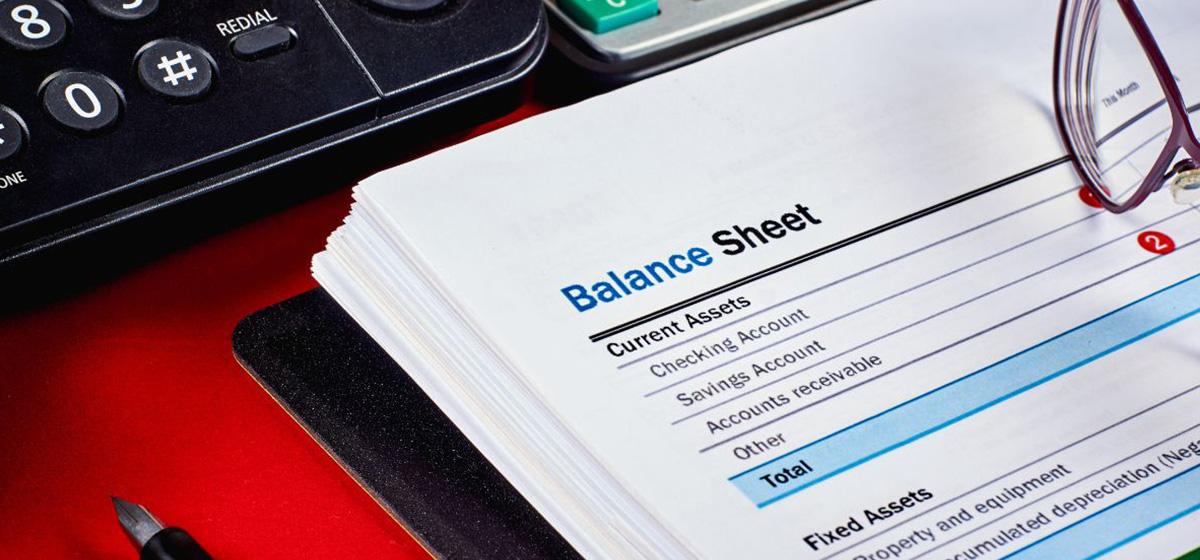A balance sheet is an essential tool for managing your small business finances. By accurately creating a balance sheet, you can evaluate your financial position, identify trends, and make informed decisions about your business’s future. Creating a balance sheet may seem daunting, but it’s a straightforward process that can be broken down into eight simple steps. These steps include picking the balance sheet date, listing all of your assets, adding up your assets, determining your current and long-term liabilities, adding up your liabilities, calculating your owners’ equity, adding up your liabilities and owners’ equity, and verifying that the balance sheet balances. Following these steps, you can create a balance sheet that accurately reflects your business’s financial health. Let NumberSquad help you create a balance sheet that works for your small business.
What is a Balance Sheet?
Creating a balance sheet is a critical task for any small business owner. The balance sheet is made up of three essential components, including assets, liabilities, and equity. Assets are anything of value that your business owns, including cash, inventory, equipment, and property. On the other hand, liabilities are debts your business owes to others, including loans, credit card balances, and accounts payable. Finally, equity represents the portion of the business that belongs to the owners or shareholders. By tracking these components through the balance sheet, you can better understand your business’s financial position and make informed decisions about its future. Let NumberSquad help you create a balance sheet that accurately reflects your business’s financial health.
What’s Included in a Balance Sheet?
Creating a balance sheet is crucial for small business owners, as it provides a snapshot of their financial position at a specific time. To create an accurate balance sheet, you must understand the three main components: assets, liabilities, and equity. Assets can include cash, accounts receivable, inventory, and property. Liabilities, on the other hand, include debts like loans, accounts payable, and taxes owed. Equity represents the portion of the business that belongs to the owners or shareholders. Tracking these components through the balance sheet enables you to make informed decisions about your business’s financial health and future. Let NumberSquad help you create a balance sheet that accurately reflects your business’s financial position.
Assets
Assets are the items that a business owns and have value. Examples of assets include cash, inventory, property, and equipment. It’s important to include all assets in your balance sheet, as they represent the value of your business. Assets are usually listed in order of liquidity, which means how quickly they can be turned into cash. This order helps to show the business’s ability to pay its debts in the short term. When creating your balance sheet, ensure that all assets are accurately recorded and valued to get an accurate picture of your business’s financial position.
Liabilities
Liabilities are the debts that a business owes to others. Examples of liabilities include loans, accounts payable, and taxes owed. Including all liabilities in your balance sheet is important, as they represent the obligations the business needs to meet. Liabilities are also usually listed in order of due date, with the most urgent liabilities listed first. This order helps to show the business’s ability to pay its debts in the long term. When creating your balance sheet, ensure that all liabilities are accurately recorded and valued so that you can get an accurate picture of your business’s financial position.
Shareholders’ equity
Shareholders’ equity, also known as owner’s equity, is the difference between a business’s assets and liabilities. It represents the portion of the business’s value that belongs to its owners or shareholders. Shareholders’ equity can increase through profits or additional investments the owners make. It can decrease through losses or distributions made to the owners. Including shareholders’ equity in your balance sheet provides an overview of the ownership structure of your business and its net worth. When creating your balance sheet, ensure that the shareholders’ equity section accurately reflects your business’s ownership structure and value.
How to Make a Balance Sheet in 8 Steps
Creating a balance sheet may seem daunting, but it can be broken down into eight simple steps. By following these steps, you can accurately prepare a balance sheet for your small business. The steps include identifying your assets, determining your liabilities, calculating shareholders’ equity, organizing your data, inputting data into a balance sheet template, reviewing your balance sheet, making necessary adjustments, and finalizing your balance sheet. In the following sections, we will discuss each of these steps in detail to help you create an accurate and informative balance sheet.
Step #1: Pick the balance sheet date
The first step in creating a balance sheet is to choose a specific date for which you want to prepare the balance sheet. This date is referred to as the balance sheet date and should be a specific point in time, such as the end of the fiscal year or a specific month-end date. By selecting a balance sheet date, you can accurately report on the financial position of your business on that specific date. This step is crucial in ensuring the accuracy of your balance sheet and providing an up-to-date snapshot of your business’s financial health.
Step #2: List all of your assets
The second step in creating a balance sheet is listing your business’s assets. This includes all the business’s value items, such as cash, accounts receivable, inventory, property, and equipment. It’s important to ensure that all assets are accurately recorded and valued, as this will affect the overall value of your business. By listing your assets, you can determine your business’s resources’ total value and ability to meet its financial obligations.
Step #3: Add up all of your assets
The third step in creating a balance sheet is to add up all of your business’s assets. This involves calculating the total value of all assets listed in step two. By adding up your assets, you can determine the total value of your business’s resources and its ability to meet its financial obligations. This step is crucial in accurately reporting the financial position of your business and providing an up-to-date snapshot of its financial health. Make sure to double-check your calculations to ensure that the total value is accurate.
Step #4: Determine current liabilities
Determining your business’s current liabilities is the fourth step in creating a balance sheet. Current liabilities are any debts the business owes, due within one year. Current liabilities include accounts payable, taxes owed, and short-term loans. It’s important to accurately identify and record all current liabilities, as they can affect the business’s ability to meet its financial obligations. By determining your current liabilities, you can understand the short-term financial obligations of your business and its ability to meet them.
Step #5: Calculate long-term liabilities
The fifth step in creating a balance sheet is calculating your business’s long-term liabilities. Long-term liabilities are any debts the business owes due after one year. Examples of long-term liabilities include mortgages, long-term loans, and bonds. It’s important to identify and record all long-term liabilities accurately. Because they can affect the business’s ability to meet its financial obligations in the long term. By calculating your long-term liabilities, you can understand the long-term financial obligations of your business.
Step #6: Add up liabilities
The sixth step in creating a balance sheet is to add up all of your business’s liabilities. This involves calculating the total value of all current and long-term liabilities identified in steps four and five. By adding up your liabilities, you can determine the total amount that the business owes to others. This step is crucial in accurately reporting the financial position of your business and providing an up-to-date snapshot of its financial health. Double-check your calculations to ensure that the total value is accurate.
Step #7: Calculate the owner’s equity
The seventh step in creating a balance sheet is calculating the owner’s or shareholders’ equity. This involves subtracting the total liabilities from the assets identified in steps two and six. The result is the business’s net worth or the portion of the business that belongs to the owners or shareholders. This step is crucial in accurately reporting your business’s ownership structure and overall value. By calculating the owner’s equity, you can understand the net worth of your business and make informed decisions about its future.
Step #8: Add up liabilities and owners’ equity
The final step in creating a balance sheet is to add up the total liabilities and owners’ equity. This will give you the total value of your business’s resources and how they are financed. The total liabilities and owners’ equity should equal the total assets identified in step two. By completing this step, you can ensure that your balance sheet is accurate and provides an up-to-date snapshot of your business’s financial health. Double-check your calculations to ensure you accurately total the value and properly include all components in your balance sheet.
Why Is It Important to Have a Balance Sheet?
A balance sheet is a vital financial statement that offers numerous benefits to businesses. Understanding its importance can help you appreciate its role in managing your company’s financial health.
- Financial snapshot: A balance sheet provides a comprehensive view of your business’s financial position at a specific point in time. It details assets, liabilities, and equity, enabling you to evaluate your company’s net worth and financial stability.
- Informed decision-making: The balance sheet is a foundation for assessing liquidity, solvency, and operational efficiency. These insights inform strategic planning, resource allocation, and investment decisions, helping your business grow and thrive.
- Performance tracking: Comparing balance sheets over time allows you to monitor financial performance and progress. This empowers you to identify trends, adapt to changes, and make data-driven decisions to stay ahead in your industry.
- Attracting capital: Lenders and investors often require balance sheets to evaluate a company’s creditworthiness and investment potential. A well-prepared balance sheet demonstrates financial stability and management proficiency, increasing your chances of securing financing or attracting investors.
- Regulatory compliance: Many jurisdictions mandate the preparation and submission of financial statements, including balance sheets. Maintaining an accurate balance sheet helps you comply with legal and regulatory requirements, avoiding potential penalties and protecting your business’s reputation.
- Risk management: By identifying trends, potential issues, or areas for improvement, a balance sheet enables proactive management of financial risks and opportunities. This helps mitigate potential problems and capitalize on growth opportunities, ensuring long-term success.
In summary, having a balance sheet is essential for clearly understanding your business’s financial position. It facilitates informed decision-making, compliance with regulations, and the ability to secure financing or investment, all while promoting effective risk management and long-term growth.
How Can NumberSquad Help to Create Your Balance Sheet?
NumberSquad is here to help you create your balance sheet accurately and efficiently. Our team of experienced accountants and financial professionals can guide you through the process step-by-step and ensure that your balance sheet is comprehensive, accurate, and up-to-date. Creating a balance sheet can be challenging, especially for small business owners managing multiple responsibilities. By entrusting NumberSquad with your balance sheet needs, you can focus on running your business while we handle the financial reporting. Let us help you create a balance sheet that accurately reflects the financial health of your business.



